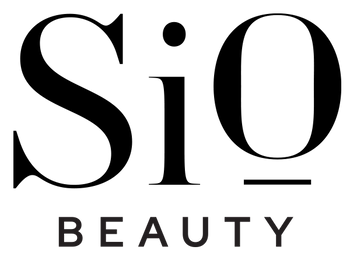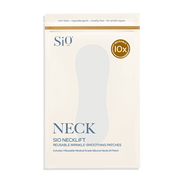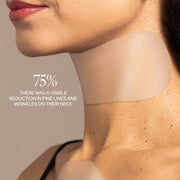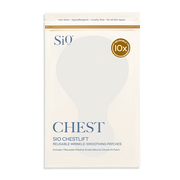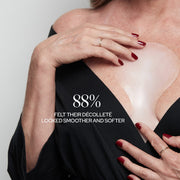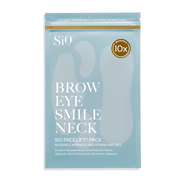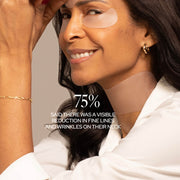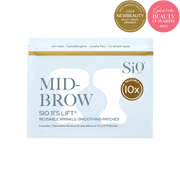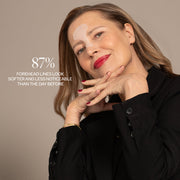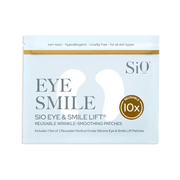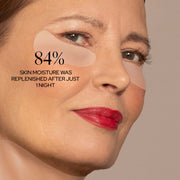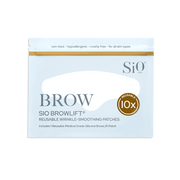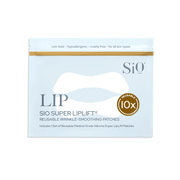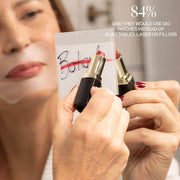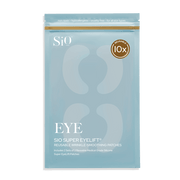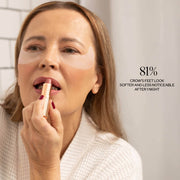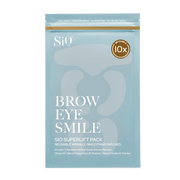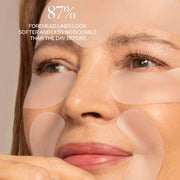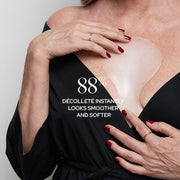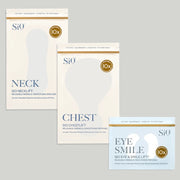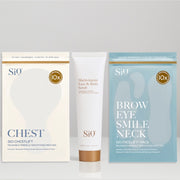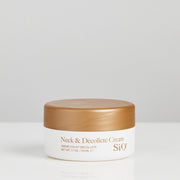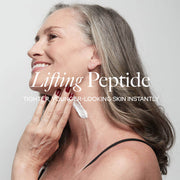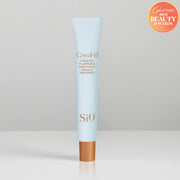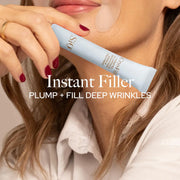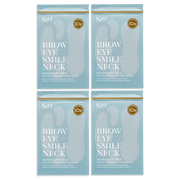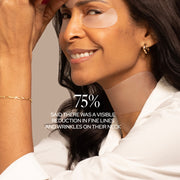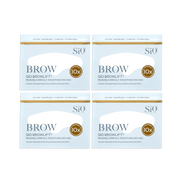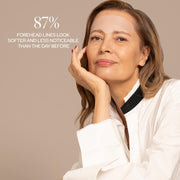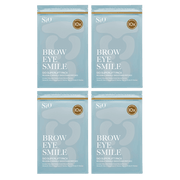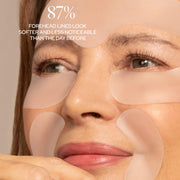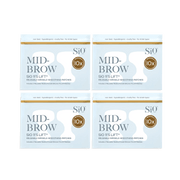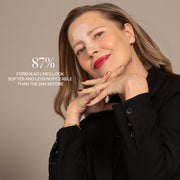Korean Face Masks: The Real Reason Behind The Latest Beauty Trend

Korean face masks are everywhere these days—from Facebook to Instagram to everything in between. Social media and the beauty world in general are all abuzz about the benefits that these sheet masks have to offer. But do you know the real reason behind the results everyone is enjoying? The answer might surprise you.

In this article, SiO experts will show you:
- What Korean face masks are
- What Korean faces masks do
- What Korean faces masks don’t do
- The real reason Korean face masks work
- A more powerful alternative that has been around for years
“Wait! What? There’s a more powerful alternative to the Korean face mask?” you ask. Indeed there is and we’ll tell you about it shortly. But before we do that, it’s important that you understand a bit more about the Korean face mask itself. That will help you see how the alternative can be so effective.
So let’s start at the beginning.
What Are Korean Face Masks?

Korean face masks, also known as sheet masks, are single-use mostly cotton pads that have been soaked in powerful skin-rejuvenating ingredients. True to their name, these masks are often of the full-face variety and are reminiscent of the early hockey masks that goalies (or an infamous 80s film villain) wore.
Most Korean face masks are designed to rest on the curves of your face. While there, the masks infuse their active ingredients into the skin for slightly visible results in a short amount of time. It’s this delivery of skin-smoothing ingredients that have earned Korean face masks their popularity. But despite all the hype, Korean face masks produce only a limited and temporary number of surface benefits and results. Some very important deep-down healing that you need to look your best is beyond the power of even the best Korean face mask.
So what can and can’t Korean face masks do? We’ll address those questions in the next two sections.
What Do Korean Face Masks Do?
As we’ve already mentioned, Korean face masks infuse their active ingredients into your skin. But there’s more to the story than just those active ingredients. In fact, as you’ll see in the last few sections of this article, “active ingredients” are only a very small part of the actual healing. The real power of the Korean face mask lies in its power to lock those active ingredients against your skin.
Think of it this way: most skin care products evaporate after a few minutes on your skin. But it can take upwards of twenty minutes or more for the ingredients to really penetrate your skin. So most of the time, the moisturizer you put on your face is evaporating before it can do any real good. Enter the Korean face mask. The sheet forms a barrier between your skin and the air around it to keep the moisture where it belongs: on your skin.

Another benefit of the sheet mask is that it doesn’t get dry and hard like many of the mud- or cream-based masks on the market. These spreadable masks do a great job of drawing out excess oil (clay masks, we’re thinking of you), but when they dry, they crack and break. This allows moisture—the thing that all skin (normal, dry, or oily) needs most of all—to literally slip through the cracks. The sheet mask doesn’t have that problem, but it certainly is messy, wet and sometimes difficult to apply.
The mask keeps moisture in contact with your skin for as long as you wear it. As miraculous and wonderful as all that sounds, Korean face masks can only do so much. And that’s where we start to really see the benefits of the alternative we’ll talk about in a moment. Before that, though, let’s investigate what Korean face masks don’t do.
What Don’t Korean Face Masks Do?

Are you familiar with the adjective “skin deep”? Perhaps you’ve heard it in something like, “Johnny’s kindness is only skin deep.” This term implies that something is not true or lasting and that it is really only superficial. Skin deep is a great way to describe the benefits that the Korean face mask produce: they really only scratch the surface and are basically just superficial.
That’s not to say that sheet masks aren’t a valuable asset to your skin care routine. They are. But they really only work their “magic” on the top layer of skin (the epidermis). That leaves the deeper layers of skin (the dermis and hypodermis) untouched. And those deeper layers contain two of the most important components for healthy, radiant skin. What are those components? Collagen and elastin. These proteins provide support to the skin that rests on top and are the primary reason for the smoothness and tightness that we’re all searching for. Korean face masks don’t affect these deeper structures.
What does that mean for your skin? It means that Korean face masks have very little effect on wrinkled skin. Sure, they may smooth out fine lines just a bit, but they won’t be able to heal the deeper, more stubborn wrinkles that form as you age. Korean face masks are ineffective at this important task for precisely the reasons mentioned above: they don’t penetrate to the deeper layers of skin or affect the collagen and elastin.
One of the main reasons for this is the amount of time they’re worn. Most Korean face masks are only worn for twenty minutes. That doesn’t give the healing effects time to penetrate through the top layer of skin to the lower levels. But even if you wear a Korean face mask all night, it really won’t do any more good. That’s because the mask isn’t designed to be additionally effective when worn for longer periods. The thin material that the mask is made from will eventually dry out and lose its moisture-trapping abilities. And as you’ll see in the next section, that is the real key to the whole process.
So even though these sheet masks do a great job at healing surface skin, they may contain ingredients that can do your skin harm over the long haul. Many Korean face masks contain alcohol, polyethylene glycol (PEG), and phenoxyethanol or ethylhexylglycerin (preservatives). Sometimes, even the fragrances can have negative effects on your skin.
Add to that the fact that many of the active ingredients in these sheet masks are really nothing special. Most can be found in even the most basic moisturizing cream you buy at your corner drugstore or supermarket. At this point, you may be wondering, “If it’s not the active ingredients, what’s the real reason for all the fuss?” Excellent question! We’ll answer it in the next section.
The Real Reason Korean Face Masks Work
Many “experts” will claim that the “active ingredients” the masks contain are what’s doing all the good (even though those ingredients may actually be causing more harm). This, in fact, is just a smokescreen for the true hero of the skin care world. The real reason Korean face masks work can be summed up in one word: Moisture.

Moisture performs many essential roles:
- Keeps skin soft and supple which allows it to resist damage
- Encourages collagen and elastin production in the deep layers of skin
- Helps filter out and minimize the damage caused by environmental factors like dust, dirt, allergens, and the sun’s harmful UV rays
Unfortunately, Korean face masks don’t harness the full force of that healing moisture. Remember that sheet masks are only worn for twenty minutes and don’t heal the deep-down skin problems (like wrinkles and crepey skin) that many women face. So is there a more powerful alternative to the Korean face mask that makes use of the healing power of moisture? We’ve been hinting all along that there is, and we can finally answer that question definitively: Yes, there is a better option!
A More Powerful Alternative
It may surprise many of you to learn that a more effective alternative to the Korean face mask exists, and has existed for years. “What is it?” you ask. Silicone patches.
Silicone sheets were first used by physicians to help heal serious skin damage like burns, scars and deep cuts. Not long after, scientists began to see the benefits these skin patches could have on regular (undamaged) skin. That’s when silicone patches were adopted by Gigi Howard, founder of SiO Beauty, to improve the appearance of dry, wrinkled and saggy skin.
The science behind the effectiveness of the silicone patch is really very simple and has already been mentioned in this article. The silicone patch, much like the sheet mask, forms a barrier on the surface of the skin that keeps moisture from evaporating and traps it next to the skin. But it also draws moisture from the lower skin layers to the surface, which allows the skin to plump itself.
What’s more, the silicone patch is designed to be worn for extended periods of time (while you are sleeping for example). Korean face masks can’t do that. So how can you harness the power of the silicone skin patch? Simple.
Wear A Silicone Skin Patch For Visible Results In Just One Night

Silicone SkinPads and patches like those offered by SiO Beauty are designed to be worn overnight to provide their wrinkle-smoothing effects. While you sleep, the silicone patches bring much-needed moisture to your skin. But you can also wear them for a few hours during the day.
You can even customize the healing experience by choosing from a variety of specially-designed patches like BrowLift, NeckLift, FaceLift, and Eye & Smile Lift. SiO even offers the SiO SkinPad—targeted healing for the hard-to-treat décolleté area. And because all of the SiO silicone skin patches are reusable up to fifteen times, they’re often cheaper than the less-effective Korean face mask. That’s a whole lot of healing for the money.
